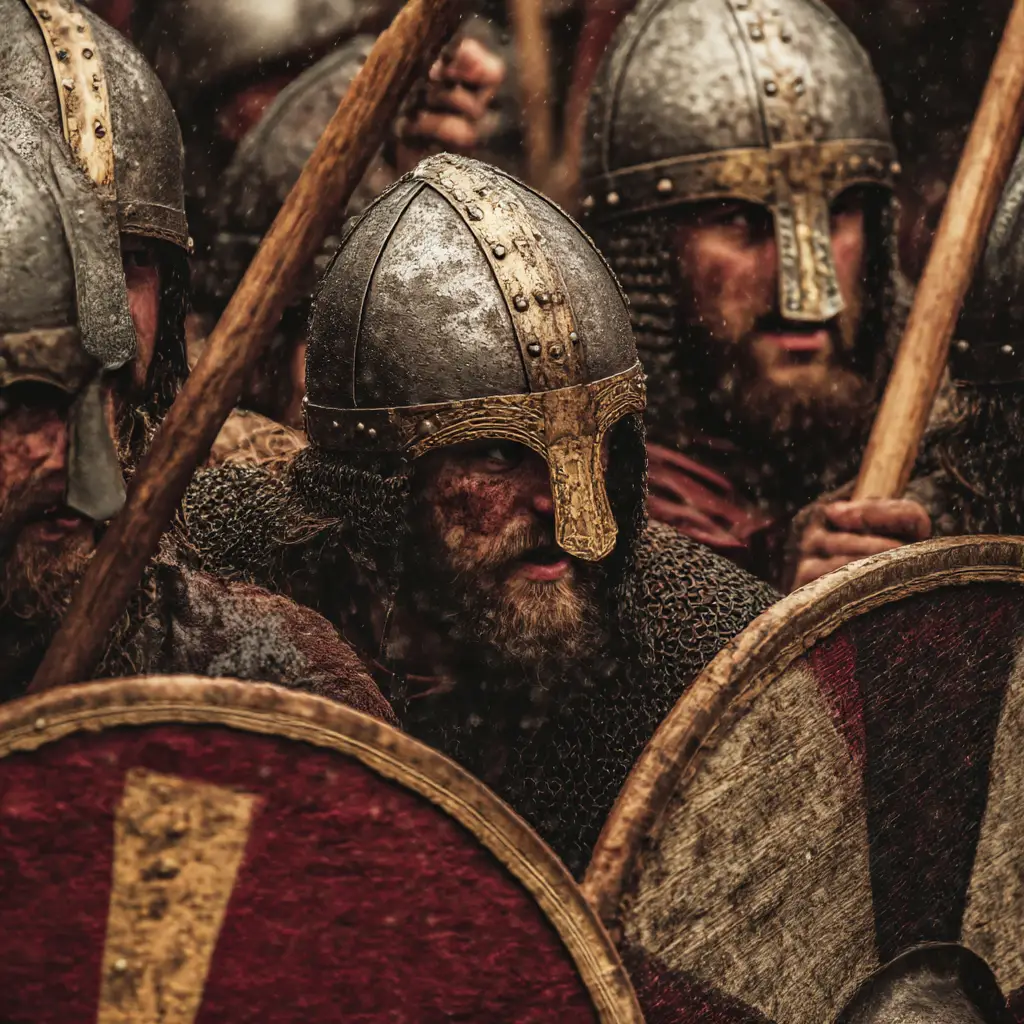The Vikings at the Battle of Corbridge – A Norse Clash in Northern England
The Battle of Corbridge, fought around the year 918, was a significant military encounter involving Viking forces during the height of Norse activity in the British Isles. This battle took place near the town of Corbridge on the River Tyne in Northumbria and marked a key moment in the struggle for control over the north of England.
Background to the Conflict
By the early 10th century, Viking influence in the British Isles was widespread, with the Danelaw firmly established in parts of northern and eastern England. The Kingdom of Northumbria, once a powerful Anglo-Saxon realm, had become a contested region between Norse rulers, Anglo-Saxon kings, and Scots.
Following the death of the Norse king Ragnall ua Ímair’s predecessor, the political landscape in Northumbria was unstable. Ragnall, a powerful Norse warlord from the Uí Ímair dynasty, sought to assert dominance over the area, which brought him into direct conflict with the English forces under Constantine II of Scotland and Ealdred of Bamburgh.
The Battle Itself
The Battle of Corbridge was fought between Ragnall’s Viking army and a coalition of forces led by Constantine II, King of Alba (Scotland), who supported the Anglo-Saxon noble Ealdred in reclaiming control of Northumbria.
According to later sources such as the Anglo-Saxon Chronicle and Irish annals, the battle was fierce and chaotic, consisting of several separate engagements rather than a single, decisive clash. Ragnall’s forces reportedly faced ambushes and shifting battle lines but ultimately managed to hold their ground.
The Vikings used classic tactics such as shield walls and aggressive counterattacks. Despite being outnumbered at times, their battlefield experience, mobility, and cohesion gave them the upper hand.
Outcome and Aftermath
While the battle itself was indecisive in terms of casualties or territory won, Ragnall was able to consolidate his hold on York soon after, effectively becoming king of Northumbria. This outcome marked a significant moment in Norse history in Britain, as it reasserted Viking power in northern England at a time when Anglo-Saxon kings like Edward the Elder were expanding their influence.
The success of Ragnall at Corbridge was also part of the larger story of Norse-Irish rulers from Dublin seeking to gain control over the British mainland, blending dynastic ambition with the Viking tradition of raiding and settlement.
Historical Significance
Strengthened Norse rule in Northumbria under Ragnall, part of the influential Uí Ímair dynasty.
Demonstrated Viking military resilience and strategic ability in hostile and shifting political landscapes.
The battle played a role in the continued fragmentation of power in Britain, with Norse, Scots, and Anglo-Saxons all competing for dominance.
Though not as widely remembered as larger battles like Brunanburh, the Battle of Corbridge stands as a key moment in the story of the Norse in Britain. It reflects the ongoing Viking impact on the politics, warfare, and identity of northern England during the early medieval period.
Today, Corbridge remains a site of historical interest, with its Roman ruins and medieval heritage, but few physical traces of the battle itself remain. However, the legacy of Norse presence in the region can still be felt in place names, archaeological finds, and the continuing fascination with Viking history in the British Isles.



